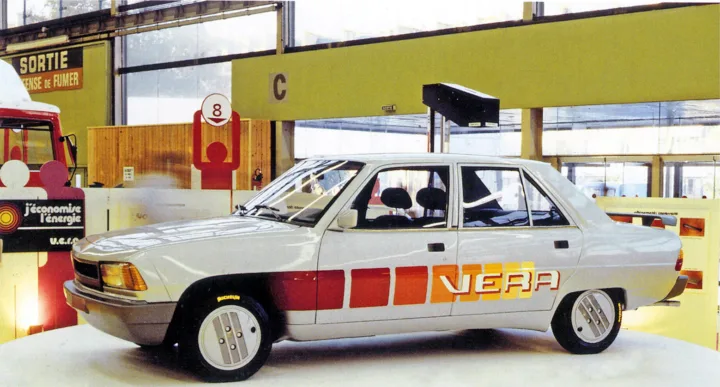Peugeot VERA: a successful eco-car experiment from 45 years ago
The beginning was made in 1980, when the first of four prototypes of the experimental VERA series was completed. The name is an acronym for Véhicule Économe de Recherche Appliquée, or “Economical Vehicle for Applied Research.” It emerged from a government program, worth around €7 million today, distributed among the country’s major car manufacturers to develop cars with lower fuel consumption piese auto online.

The VERA prototype was created by Peugeot in just a year and a half on behalf of the French Agency for Energy Saving, which also predetermines its main scientific purpose. Its body is basically identical to that of the Peugeot 305 SR production model, with the weight reduced by 20% and from 942 kg to 755 kg without affecting safety standards. This was achieved by removing some of the unnecessary weight of all possible components, which lightened respectively: the engine by 22 kg, additional equipment by 12 kg, the rear axle by 34 kg, the steering by 8 kg, the wheels and tires by 15 kg, the equipment by 30 kg and the body by 67 kg.
A modified engine from the small compact Peugeot 104 model with a displacement of 1452 cc and a power of 63 hp at 4500 rpm was used, with the compression ratio increased to 10.2, and the ignition is electronic. Information about the engine's operation is processed by an electronic microprocessor, which issues commands to change the ignition advance and other operating parameters, to maximize fuel economy. The electronic memory of the device contains 1024 different ignition timing values, which guarantee that the engine will always operate in the most economical mode. The flywheel is lightweight, the carburetor and crankcase are made of magnesium alloy, the head cover and pedal carrier are made of plastic, and the pedals themselves are aluminum. The rims are made of synthetic material. The body is lightweighted by using thinner but stronger sheet metal. The doors and both front and rear hoods are made of fiberglass, and the front fenders are made of polyamide.
To improve the aerodynamics, all protruding body components were smoothed, the front and rear windows were without external edges, the water gutters were removed, wheel covers were installed, as well as deflectors on the front side windows and in front of the rear fenders. As a result of these changes, the drag coefficient of 0.44 in the Peugeot 305 was reduced by 27%, and thus was reduced to 0.306. The average gasoline consumption of the VERA is 1/3 lower than that of the Peugeot 305, and at a constant speed of 80 km/h it does not exceed 4.53 l per 100 km.
- 2025-12-08 - Creative freedom in socialist Poland: the cross between Fiat 126P and Polonez
- 2025-12-06 - Toyota GR GT: Supra's bigger "brother" comes with a V8 engine
- 2025-12-05 - Opel OSV 40: the battle for safety began half a century ago
- 2025-12-04 - 60 years since the premiere of the first Opel GT
- 2025-12-03 - The Fabia lacks subtlety
- 2025-12-02 - The big test: what are the best winter tires for 2026?
- 2025-12-01 - Used car inspection: Porsche 911 (992)
- 2025-11-30 - Nikola Tsolov with a phenomenal performance in his first Formula 2 start
- 2025-11-29 - Nikola Tsolov with an impressive result in his first Formula 2 qualifying
- 2025-11-28 - Used car inspection: Porsche 911 (997)












